DoubleSight DS-277W: Back to the Drawing Board
by Chris Heinonen on June 13, 2012 1:30 AM ESTStraight out of the box and set to 200 nits, the DS-277W offered pretty respectable performance with an average dE of only 6.46. Blues were the main issue, but the grayscale was pretty respectable without calibration, which is the most important aspect with the dE value.

Once calibrated to D65 with 2.2 gamma, the dE drops way down to 1.5 on average. Amazingly this is in line with the more expensive NEC PA271W that I had just tested. The grayscale was nice and flat, and the only colors with an error over 3 were those shades of blue we always see having issues. So despite those huge issues with the brightness level, if you keep yourself at a happy medium light output level, you can get good color results out of the DS-277W.
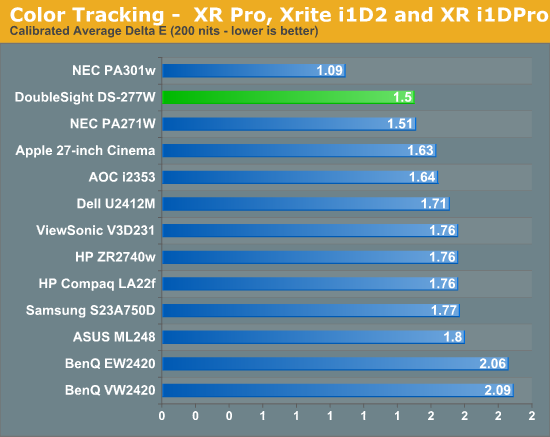
Median color error for 200 nits was the second-best that we have seen. Half of the colors have an error of 1 or less, rendering the difference totally invisible the eye, and a few poor colors are dragging the average way down. If you know what colors are causing this, this can be good as the grayscale and other colors will be accurate, you just need to know that blues will be more incorrect than other shades.

As mentioned on the brightness page, the lowest output level was 140 nits, which means the LUTs have to be adjusted down for reaching 100 nits of light output. This can be done, but shifting the levels to such a large degree can also lead to posterization, a lack of full dynamic range, and other issues with your output, and this is now video card dependant. Possibly because of this the 100 nits average dE rises up to over 2.0 from the 1.5 at 200 nits. Of course since this display only goes down to 140 nits, I would not recommend it for print work either, regardless of the dE value here.
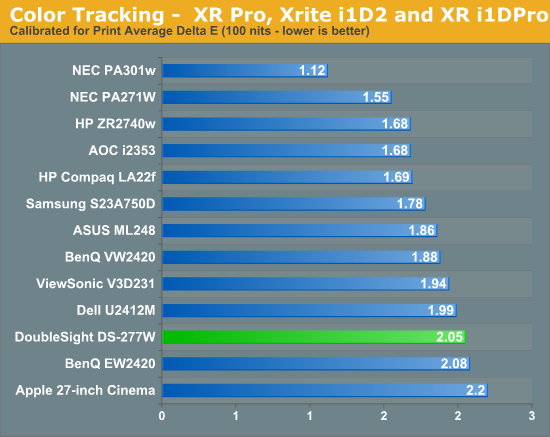
However, it does have a panel and backlighting system with a full AdobeRGB colorspace, and can display over 107% of the AdobeRGB standard. For editing images at 200 nits or so this will work well.
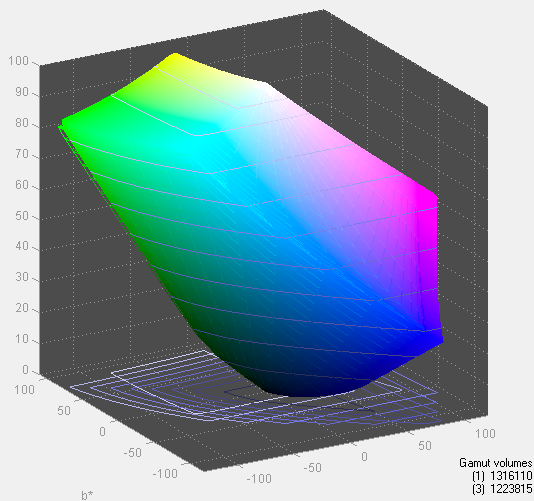
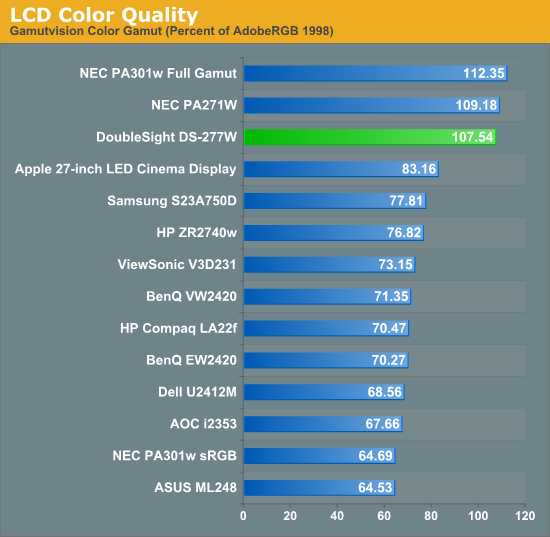


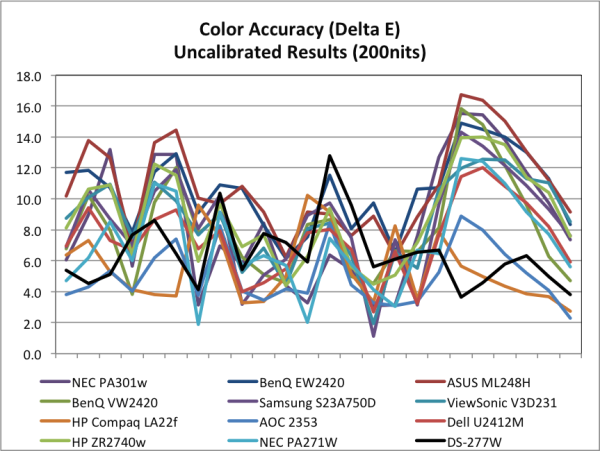
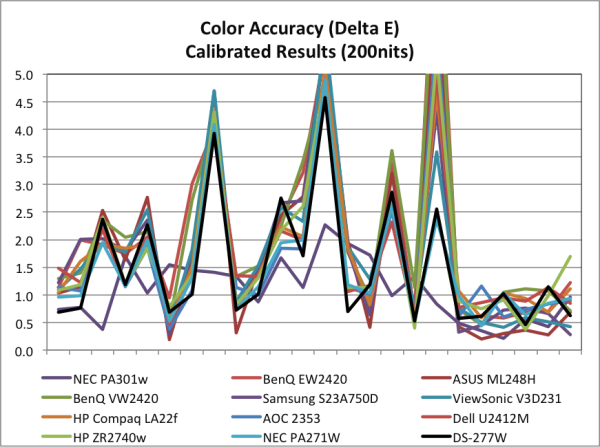
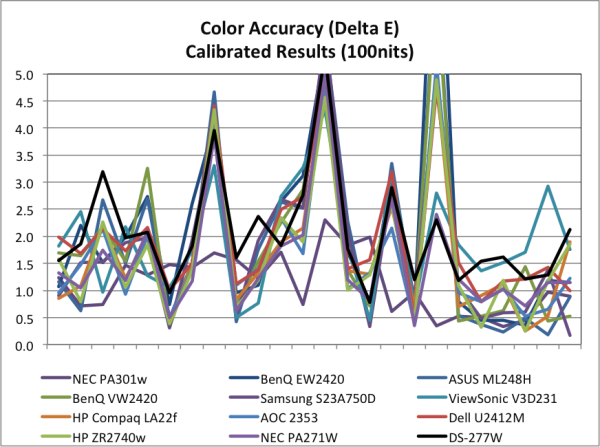








55 Comments
View All Comments
esSJae - Thursday, June 14, 2012 - link
3 monitors? I use DP for my main monitor on my AMD 6970, DVI for the other 2.6 monitors? Better have DP.
dertechie - Monday, June 18, 2012 - link
Anyone using Eyefinity is using either DP or an expensive DP to X converter. Given what those cost, a lot of us just use DP if we picked up the 3rd monitor in the last 3-4 years.DP has a lot more support than just Apple. It's cheaper on the transmitter side than DVI or HDMI (and probably VGA by now), so such insignificant players as AMD, NVidia and Intel are dropping legacy connectors as quickly as they can get away with it. Much less penetration on the monitor side of things though.
cheinonen - Wednesday, June 13, 2012 - link
Well, the specs said it had DisplayPort, but really we were trying to do a round up of as many 27", 2560x1440 models as possible. There aren't too many of them out there but this was one of them.Mitch89 - Saturday, June 16, 2012 - link
I'm also a little confused about this sentence:"... the DS-277W is to make a monitor that can work with all of your devices, not just your computer. It has multiple AV inputs (HDMI, Component) for your Blu-ray player or video game systems, and there are integrated speakers for audio from these devices as well. "
The Dell U2711 has DisplayPort, 2x DVI, VGA, HDMI, Component and even composite connections, and has been out for quite some time (updating previous 27" Dells that had similar connectivity).
It would seem if multimedia and all-round connectivity is the priority, then the Dell has this thing beat.
That's without considering Dell's excellent exchange warranty.
cheinonen - Saturday, June 16, 2012 - link
In the conclusion I mention the Dell U2711 and that if you need that connectivity, you should buy the Dell instead. I see no reason to pick the DS-277W over the Dell, or really any other 27", and mention that in the conclusion.damianrobertjones - Wednesday, June 13, 2012 - link
All these screens really need to start featuring touchVoo - Saturday, June 16, 2012 - link
Yep stretching your whole body so that you get into touch range of your 30" monitor (you hardly sit 20cm away from one do you?) and then having to deal with all those fingerprints and smears sounds PERFECT! Can't wait for this totally useless feature that will probably double the price of monitors.Jedi2155 - Wednesday, June 13, 2012 - link
I'm not sure if you're familiar with the Yamasaki Catleap, which is a potentially 120 Hz capable 27" IPS display, but I've been really wanting to get one once the people organizing it, can get some more built. I would love an Anandtech review on it as well. I already plan on getting one as soon as they are available, so I don't need you guys to tell me to get one, but it would be good to get more manufacturers on the 120 Hz PC bandwagon that isn't a 3D TN based display....http://120hz.net/content.php
anishannayya - Wednesday, June 13, 2012 - link
Correct me if I'm wrong here, but don't you really need to push 120+ FPS to discern the benefits of 120hz? How could you do this when you are already trying to drive the display at 1440p? Furthermore, once you SLI cards, don't you restrict the maximum hz a display can be set at?Sure, you could do it when you aren't gaming, but what is the point of that? Making your cursor move more "smoothly"? Does it even matter unless you are gaming?
MamiyaOtaru - Wednesday, June 13, 2012 - link
Not every game is Crysis. There are plenty of games that a modern card can render at 120+ fps